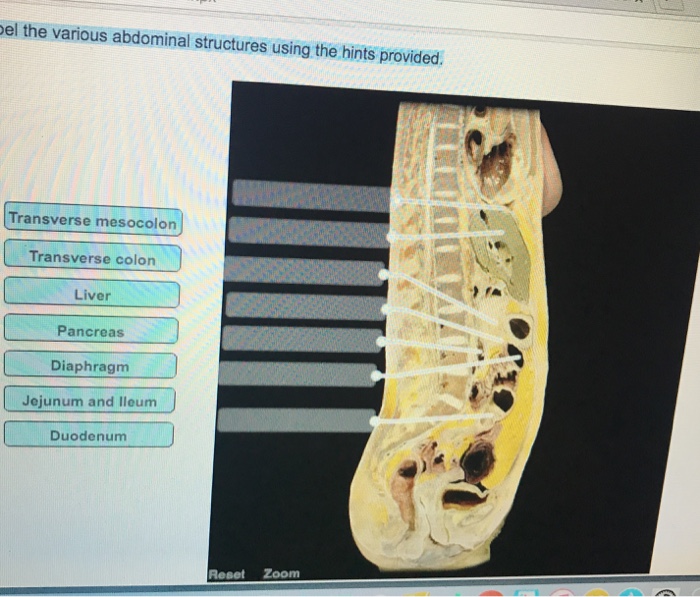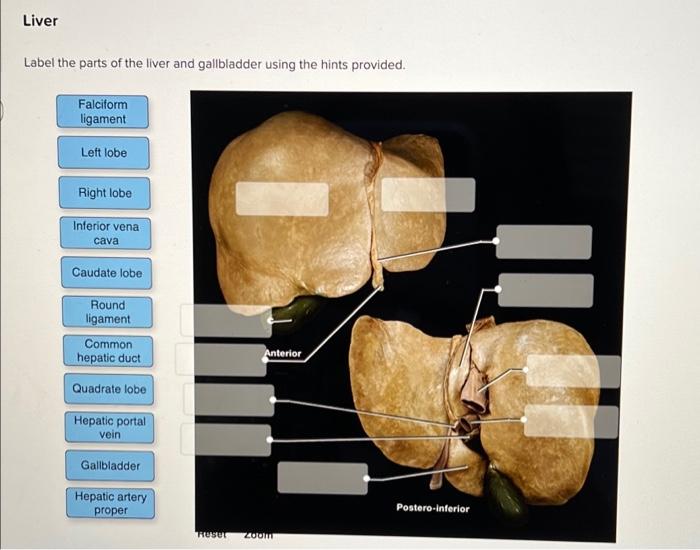Label the various abdominal structures using the hints provided – Delve into the intricate world of abdominal anatomy with this comprehensive guide to labeling the various abdominal structures. From the liver’s vital functions to the kidneys’ essential role in filtration, this exploration unveils the complex interplay of organs within the abdominal cavity.
Each abdominal structure is meticulously described, providing insights into its location, size, function, and anatomical features. Embark on this journey of discovery to gain a deeper understanding of the human body’s inner workings.
Abdominal Structures: Label The Various Abdominal Structures Using The Hints Provided

The abdominal cavity is a region of the body that contains several vital organs. These organs play important roles in digestion, metabolism, and excretion.
Abdominal Structures: Liver, Label the various abdominal structures using the hints provided
The liver is the largest organ in the abdominal cavity. It is located on the right side of the abdomen, under the diaphragm. The liver is responsible for a variety of functions, including filtering blood, producing bile, and storing glucose.
The liver is divided into two lobes: the right lobe and the left lobe. The right lobe is larger than the left lobe. The liver is also divided into several segments, which are separated by connective tissue.
Abdominal Structures: Stomach
The stomach is a J-shaped organ that is located on the left side of the abdomen. The stomach is responsible for breaking down food into smaller pieces. The stomach secretes gastric juices, which contain hydrochloric acid and enzymes that help to break down food.
The stomach is divided into four regions: the cardia, the fundus, the body, and the pylorus. The cardia is the region of the stomach that connects to the esophagus. The fundus is the dome-shaped region of the stomach that is located above the cardia.
The body is the main region of the stomach. The pylorus is the region of the stomach that connects to the small intestine.
Abdominal Structures: Small Intestine
The small intestine is a long, coiled tube that is located in the abdomen. The small intestine is responsible for absorbing nutrients from food. The small intestine is divided into three sections: the duodenum, the jejunum, and the ileum.
The duodenum is the first section of the small intestine. The duodenum is where food is mixed with bile and pancreatic juices. The jejunum is the middle section of the small intestine. The jejunum is where most of the nutrients from food are absorbed.
The ileum is the last section of the small intestine. The ileum is where the remaining nutrients from food are absorbed.
Abdominal Structures: Large Intestine
The large intestine is a long, coiled tube that is located in the abdomen. The large intestine is responsible for absorbing water from food and forming stool. The large intestine is divided into four sections: the cecum, the colon, the rectum, and the anal canal.
The cecum is the first section of the large intestine. The cecum is where the small intestine connects to the large intestine. The colon is the main section of the large intestine. The colon is where most of the water from food is absorbed.
The rectum is the last section of the large intestine. The rectum is where stool is stored before it is excreted.
Q&A
What is the primary function of the liver?
The liver plays a crucial role in metabolism, detoxification, and bile production.
Where are the kidneys located?
The kidneys are situated retroperitoneally, one on each side of the vertebral column.
What is the function of the small intestine?
The small intestine is responsible for the majority of nutrient absorption from digested food.


